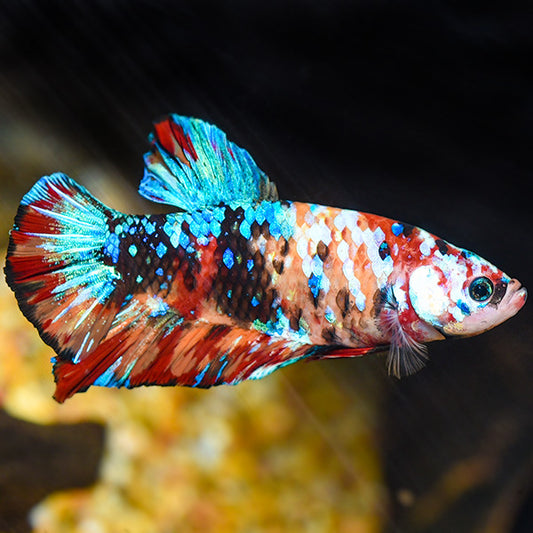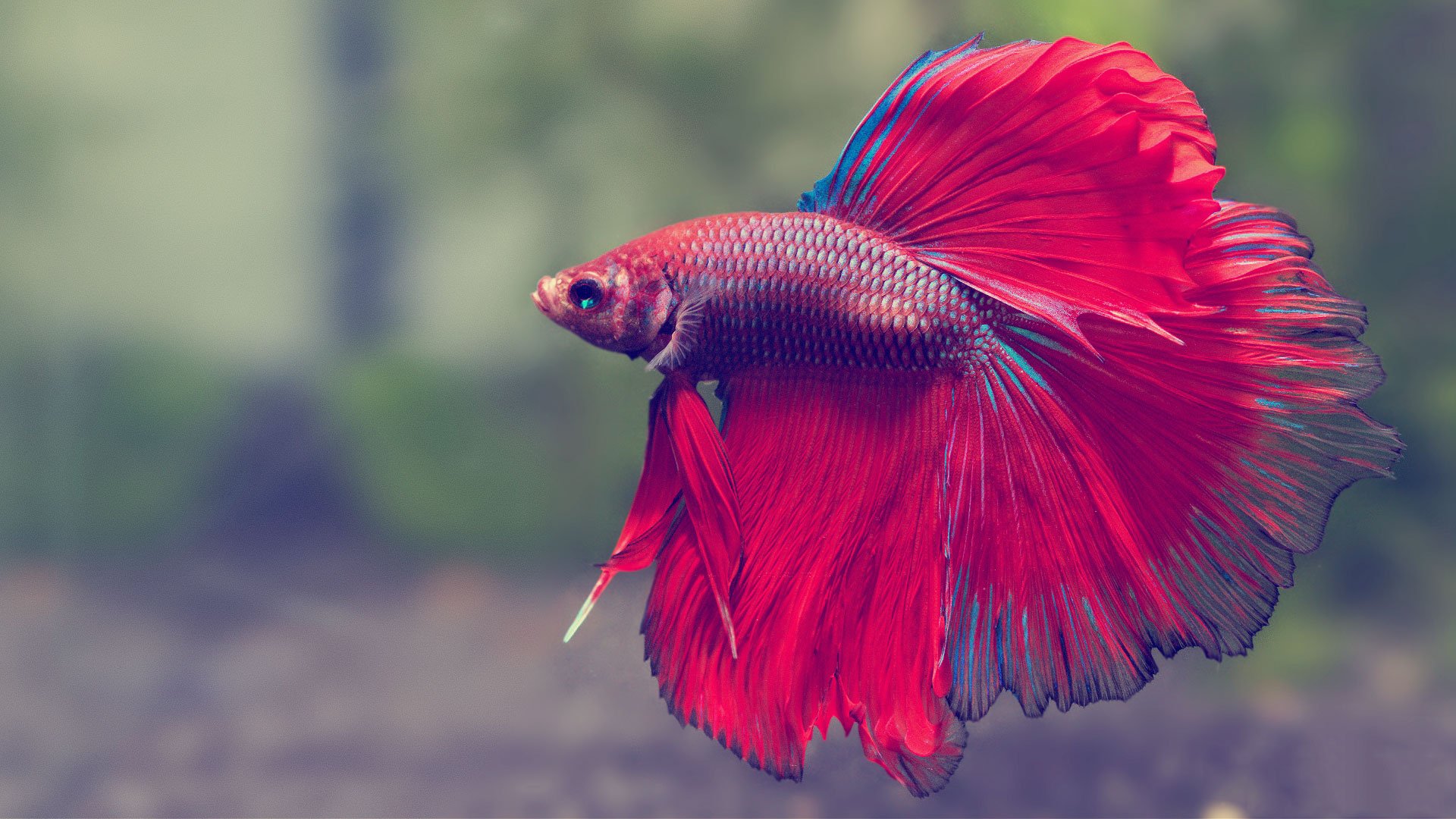Understanding Betta Fish Actions: What Every Owner Needs To Know
Wiki Article
Breeding Betta Fish: a Comprehensive Step-By-Step Overview to Successfully Raising Infant Bettas From Eggs to Their Adult Years
Reproducing Betta fish is a thorough endeavor that requires cautious planning and execution to make sure the effective growth of fry from eggs to grow fish. As the male Betta diligently constructs a bubble nest and guards the precious eggs, the subsequent stages of care and transition demand attention to detail and understanding of finest methods.
Picking Breeding Pairs
When starting the trip of breeding Betta fish, selecting the appropriate reproduction pairs is essential to achieving preferable qualities and a healthy family tree - betta fish. The very first step in this procedure is to determine the certain traits you desire to improve or preserve, such as color, fin type, and body form. It is important to select genetically varied sets to stay clear of inbreeding, which can result in health problems and undesirable attributesAssess possible breeding prospects very carefully. A healthy male Betta needs to display vivid colors, an energetic attitude, and well-formed fins, while the female must additionally present vibrant pigmentation and a rounded belly, suggesting preparedness for spawning. Observing the temperament of both fish is crucial, as hostile or excessively reluctant individuals may not reproduce successfully.
Maintaining documents of the parent fish's ancestry can assist you track genetic traits and prospective problems. Eventually, spending time in the choice procedure will substantially boost the chance of generating solid, lively spawn that fulfill your reproduction objectives.

Preparing the Breeding Tank
Creating an optimum breeding environment is a vital step after selecting appropriate pairs for Betta fish. The reproduction storage tank should be especially created to provide convenience and promote the all-natural breeding behaviors of the fish. Beginning with a storage tank size of at the very least 10 gallons to guarantee adequate area for both the man and female Bettas.Keep a gentle purification system to keep the water tidy while avoiding strong currents that can stress the fish. Furthermore, an air stone can be contributed to give oxygenation without interrupting the water surface area excessive.
Temperature law is important; go for a steady series of 78-82 ° F(25-28 ° C) using a reliable heating unit. The pH degree should be maintained in between 6.5 and 7.5, and regular water changes are necessary to ensure high water top quality.
Include drifting plants or generating mops to produce concealing spots for the female, while likewise motivating bubble nest structure by the man - betta fish. Ensure the storage tank is complimentary from sharp decors and any kind of possible hazards, as the welfare of the fish need to always be prioritized during this vital stage of reproduction.
The Reproduction Refine
Commonly, the reproducing procedure for Betta fish entails a collection of distinctive and visible behaviors that indicate readiness for reproduction. The male Betta starts by constructing a bubble nest at the water's surface area, which functions as a site for the fertilized eggs. This nest is essential, as it offers a safe environment for the eggs until they hatch out.Once the nest is established, the man will certainly show courtship habits, such as flaring his fins and displaying dynamic shades to draw in the find out here now woman. The female, upon sensing the man's preparedness, will certainly respond by displaying vertical red stripes along her body, signifying her receptiveness.
The fertilized eggs after that fall to the bubble nest, where the male meticulously gathers and returns them to the nest. Following this, the male assumes obligation for guarding the nest and making sure the safety of the eggs up until they hatch out, typically within 24-36 hours.
Caring for Betta Fry
Taking care of Betta fry calls for mindful focus to their environment and nourishment to guarantee healthy and balanced growth and growth. After hatching, Betta fry are very tiny and vulnerable, requiring a stable and clean environment. Maintaining a water temperature in between 78 ° F and 80 ° F is essential, as Betta fry prosper in cozy conditions. Furthermore, make certain that the water is totally free of unsafe toxins; routine water adjustments of 10-20% are recommended to maintain ideal water top quality.Feeding Betta fry is similarly vital. They ought to be provided infusoria or finely crushed top quality fry food, as their mouths are also tiny to handle larger particles. As they grow, you can gradually introduce larger foods, such as child salt water shrimp or powdered flakes, to ensure they get appropriate nutrition. Feed them percentages several times a day, being careful not to overfeed, which can lead to water quality issues.
Transitioning to Grownup Bettas
As Betta fry mature, transitioning them to grown-up Bettas is an essential stage that needs cautious management of their navigate here environment and social interactions. This procedure typically starts when the fry get to around six weeks of age, whereupon they can be progressively introduced to an extra organized living atmosphere.To facilitate this transition, it is necessary to make sure that the water parameters-- such as temperature level, pH, and ammonia levels-- are optimal and secure. Grown-up Betta fish flourish in cozy water (around 78-80 ° F) with a pH of 6.5 to 7.5. Slowly adjust the fry to these conditions to lessen anxiety.
Social communications are one more essential element; male Bettas are notoriously territorial and aggressive. It is suggested to different males into specific tanks as they develop. Female Bettas can be housed together, however care needs to be taken to monitor for indications of aggressiveness.
In important site addition, nutritional changes must be made as the fry grow. Incorporate top quality pellets and live foods to sustain their growth and wellness. By taking care of these factors properly, you can promote a successful transition to adulthood for your Betta fish.

Conclusion
Successful reproduction of Betta fish needs mindful interest to detail throughout the whole process, from selecting genetically varied pairs to giving optimum take care of fry. By guaranteeing appropriate reproduction conditions and keeping water quality, the likelihood of healthy and balanced spawn boosts considerably. Additionally, a balanced diet plan and gradual adjustment to grown-up environments are essential for the development and advancement of Betta fish. Complying with these actions faithfully fosters a prospering populace of Betta fish, improving both their health and wellness and vitality.Report this wiki page